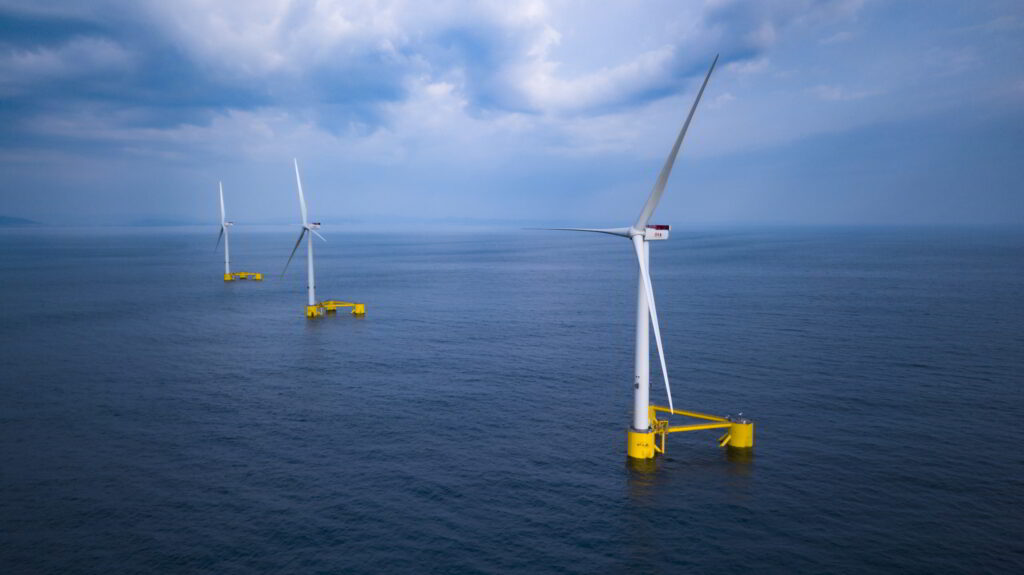In its four years of operation, the world’s first semi-submersible floating offshore wind farm, WindFloat Atlantic, has surpassed anticipated production figures, achieving a total cumulative output of 320 GWh.
Connected to the grid by the end of 2019 and fully commissioned in 2020, the floating offshore wind farm was developed by the Windplus consortium, comprising Ocean Winds (a joint venture between EDPR and ENGIE), Repsol, and Principle Power.
The pioneering wind farm consists of three platforms, each supporting one 8.4-MW Vestas turbine. These are anchored with chains to the seabed and connected to the onshore substation in Viana do Castelo, Portugal, through a 20-kilometer cable.
The project’s electricity production has steadily increased each year, reaching 78 GWh in 2022 and 80 GWh in 2023.
As of July 2024, the 25 MW floating wind farm recorded a total cumulative production of 320 GWh, providing power annually to over 25,000 households in Viana do Castelo. This achievement has prevented more than 33,000 tonnes of CO2 emissions and created 1,500 direct and indirect jobs, according to Ocean Winds.
Ocean Winds remains committed to monitoring and enhancing the environmental performance of the WindFloat Atlantic wind farm throughout its lifecycle. The project has been shown to have minimal impact on the seabed and biodiversity, with surveys identifying over 270 species coexisting with the wind farm and no significant adverse effects on marine mammals or endangered bird species.
Additionally, surveys indicate that the floating structures have fostered marine life, contributing to a conservation and reef effect underwater, stated Ocean Winds.
Recently, researchers at the University of Limerick (UL) developed a robotic solution for inspecting floating offshore wind farms, which was tested at WindFloat Atlantic.
This content is available after accepting the cookies.


ADVERTISE ON OFFSHOREWIND.BIZ
Get in front of your target audience in one move! OffshoreWIND.biz is read by thousands of offshore wind professionals daily.
Follow offshoreWIND.biz on:
Original Story at www.offshorewind.biz
